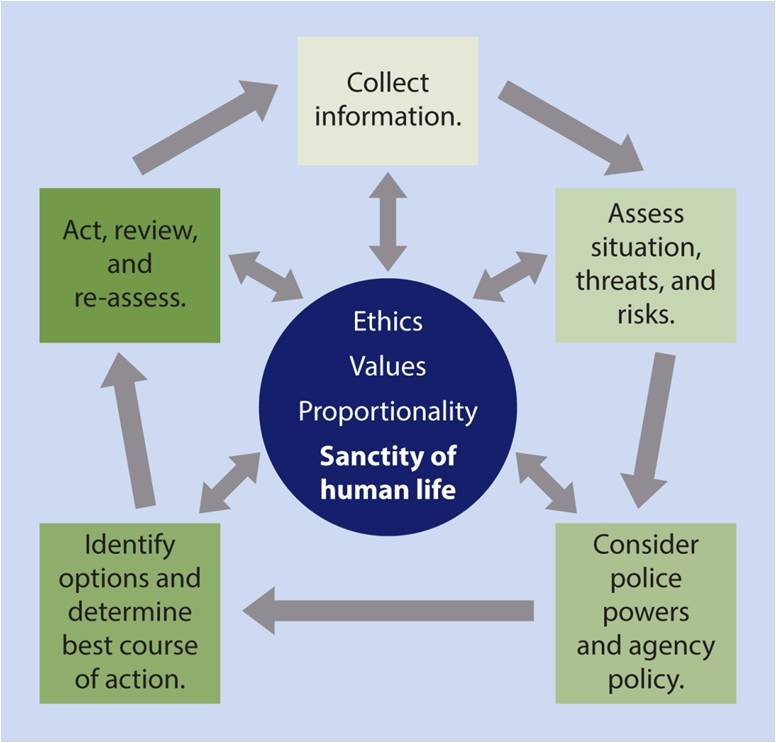ICAT Training Guide Materials
PERF is in the process of finalizing the content for these six modules, based on feedback received during the pilot testing of the Training Guide. In the near future, specific lesson plans, Power Point presentations, videos, scenario-based training scripts and other resources will be posted on this website. The ICAT Training Guide is presented in six modules: Module 1: Introduction. This module explains the purpose and focus of the training, emphasizing that public safety and officer safety lie at the heart of the entire Training Guide. Module 2: Critical Decision-Making Model (CDM). This module discusses the importance of critical thinking and decision-making for officers responding to the types of incidents that are the focus of this Training Guide. It presents the Critical Decision-Making Model as a training and operational tool for agencies to structure and support officers’ decision-making. Module 3: Crisis recognition and response. This module provides basic information on how to recognize individuals who are experiencing a behavioral crisis caused by mental illness, drug addiction, or other conditions. It also provides techniques on how to respond to such individuals and initiate communications with them. Module 4: Tactical communications. This module provides more specific and detailed instruction on communicating with subjects who are agitated and initially non-compliant. It focuses on key communications skills, including active listening and non-verbal communication, that are designed to help officers manage these situations and gain voluntary compliance. Module 5: Operational safety tactics. Using the Critical Decision-Making Model as the foundation, this module reviews critical pre-response, response, and post-response tactics to incidents in which a person in behavioral crisis is acting erratically or dangerously but is not brandishing a firearm. It emphasizes concepts such as the “tactical pause”; using distance and cover to create time; using time to continue communications, de-escalate heightened emotional responses, and bring additional resources to the scene; tactical positioning and re-positioning; and teamwork. Module 6: Integration and practice. This module pulls the preceding modules together. Using video case studies and scenario-based exercises, it gives officers additional opportunities to practice the concepts and skills learned throughout the training.
|

